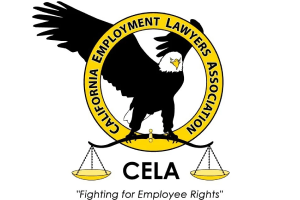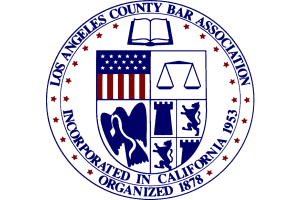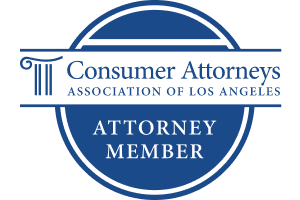Employee Rights
East Los Angeles, California
East Los Angeles, California is not a city, but, rather, an unincorporated area of Los Angeles County. East Los Angeles, also known as East L.A., is situated east and southeast of Downtown Los Angeles and is near the cities of Montebello, Monterey Park, and Commerce. East Los Angeles is a Census-designated place with a population of around 118,000. Approximately 34% of housing is owner occupied. East Los Angeles encompasses over seven square miles and includes flat and gently sloping areas as well as the hilly terrain of the Repetto Hills. East Los Angeles consists of a variety of neighborhoods developed over a period of decades ranging from the early to mid-20th century. One of the main transportation arteries of East Los Angeles is Atlantic Boulevard, which at one time was home to many nightclubs, bars, and restaurants. Several freeways pass through the area, providing easy access to other portions of Southern California.
The Original East Los Angeles
Up through 1917, Lincoln Heights, a neighborhood within the City of Los Angeles located northeast of Downtown Los Angeles, one of Los Angeles’ earliest suburbs, was called East Los Angeles. In 1917, residents, in an unofficial referendum, voted to adopt the name of Lincoln Heights for the area. Shortly thereafter, East Los Angeles became Lincoln Heights. For several years afterwards no area within Los Angeles County was referred to as East Los Angeles.
Modern Day East Los Angeles
Eventually, the unincorporated communities of Belvedere Gardens, Belvedere Heights, and several neighboring unincorporated communities came to be known as East Los Angeles.
Belvedere Gardens
In 1917, much of what is now East Los Angeles consisted of agricultural fields and chapparal covered hills. In the early 1920s, Janss Investment Company—a real estate powerhouse operated by Peter Janss, an immigrant from Denmark, and his two sons—began promoting a development called Belvedere Gardens in what is now East Los Angeles. Belvedere Gardens was situated on former agricultural land near the eastern terminus of the Stephenson Avenue streetcar line (Stephenson Avenue is the present day Whittier Boulevard). The proximity of the development to a streetcar line was critical to its success, as at the time a great many Los Angeles area residents relied on streetcars as their principal form of transportation. Lots, which sold for as little as $950, were advertised as little farms that measured 100 feet wide and 160 feet deep. Along with low prices, another selling point was that the area did not have the restrictive ordinances enacted in neighboring incorporated cities. As such, buyers were allowed to place temporary structures on their properties, raise chickens, rabbits, cows, or goats, and subdivide their properties, perhaps earning back their original purchase price or more. Belvedere Gardens was also an attractive choice for buyers because it was near the rising manufacturing areas of Vernon, Commerce, and other communities to the south, where many of the buyers worked. The venture was so successful that at one time Belvedere Gardens and surrounding communities were touted as the largest unincorporated community in the world. For a short period in the 1920s, the area even had its own weekly newspaper, The Gazette.
By the end of the decade, residents of Belvedere Gardens and its surrounds began seeking to rename the area East Los Angeles. Passions ran high for the name change. When the Automobile Club of Southern California erected three large signs that proclaimed the area as Belvedere Gardens, the presidents of the East Los Angeles Breakfast Club and East Los Angeles Forum Club, along with others, uprooted the signs. Later, during a ceremony, the signs were placed in a large black coffin, symbolically forever burying the name Belvedere Gardens.
City Terrace
Another East Los Angeles neighborhood is City Terrace. Walter Leimert began development of the hilly area in the early 1920s. A predominately Jewish area in the late 1930s through the mid 1940s, the area remains chiefly residential.
East Los Angeles is home to a number of cemeteries established when the area was mostly rural countryside, close to Los Angeles yet, unlike the city itself, where an abundance of vacant land was still available. The Russian Molokan Cemetery was designed as a burial ground for members of a Christen sect that separated from the dominant Russian Orthodox Church. The Calvary Cemetery is a Roman Catholic cemetery that opened in 1896 and is among the oldest and largest cemeteries in the area, covering 137 acres.
Occidental College
The original building of Occidental College, which is touted as the Los Angeles area’s only liberal arts college, was built in the East Los Angeles area in 1888. Rowan Avenue Elementary School now occupies the site. The Occidental College’s original building was destroyed by fire in 1898.
Governmental Services
A Los Angeles County Supervisor represents East Los Angeles. Law enforcement services are provided through the East Los Angeles Sheriff’s Station of the Los Angeles County Sheriff’s Department. Fire protection services are provided through the County of Los Angeles Fire Department. Los Angeles County has several library branches in the East Los Angeles area.
Culture
East Los Angeles possesses a cultural focus that separates it from greater Los Angeles. For example, Whittier Boulevard hosts the Latino Walk of Fame, patterned after the world-famous commemorative sidewalk in Hollywood, but with red suns inset in a gold background honoring such cultural heroes as Cesar Chavez, Desi Arnaz, Cesar Romero, Jose Feliciano, Antonino Banderas, and Fernando Valenzuela.
East Los Angeles College
East Los Angeles College is a public community college located just outside of East Los Angeles in the City of Monterey Park. East Los Angeles College creates a major positive economic impact on the area. The college employs over 2,100 full and part-time faculty and staff. Annual operations spending exceeds $120 million. Total economic impact is estimated to exceed $1 billion annually. Student enrollment exceeds 35,000. The college was established in 1945 and moved to its present site in 1948.
Contact Us
If you were not paid properly, or if you believe your employer or former employer otherwise violated your rights, call the experienced employment attorneys at Kokozian Law Firm, APC or Contact Us via our online form. We advance all costs. No recovery, no fee.







